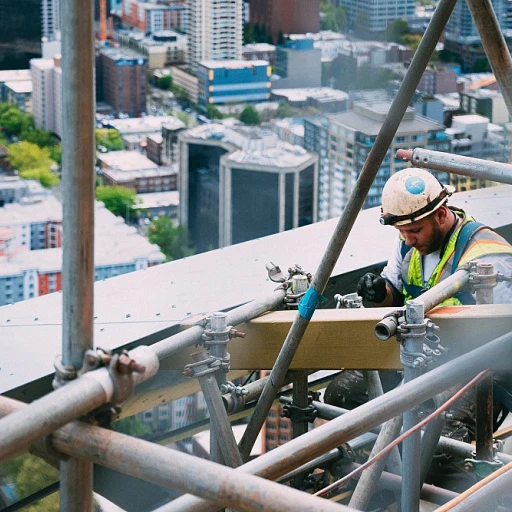Understanding the Unique Challenges in Collections
Recognizing the Distinctive Hurdles in Collections
Understanding the specific challenges that collections departments face is pivotal in enhancing employee retention. The collections field is often associated with high turnover rates, which can significantly impact the effectiveness and morale of the team. Various factors contribute to this turnover, requiring targeted retention strategies to ensure a stable workforce.- Stress and Pressure: Employees in collections frequently encounter high-pressure situations, leading to stress that can decrease job satisfaction and retention over time. Developing a positive work environment where this pressure is acknowledged and managed is essential.
- Challenging Interactions: A significant part of a collections employee's job involves handling difficult customer conversations. Organizations must implement strategies that support employees and help them feel valued despite these challenges. Cultivating a supportive work culture can offset these difficulties and encourage retention.
- Limited Growth Opportunities: Without clear avenues for development, employees might seek new opportunities elsewhere. It's crucial for organizations to offer professional development opportunities and recognize potential for advancement within the team. These efforts can boost employee engagement and decrease turnover.
Building a Positive Work Environment
Cultivating a Supportive and Engaging Workplace
Creating a positive work culture is crucial when it comes to retention strategies in collection departments. Employees are more likely to stay with an organization if they feel valued and engaged in a supportive work environment. A thriving company culture is not only about the day-to-day job satisfaction but also about fostering long-term professional development opportunities and work life balance.
- Promote Employee Engagement: When employees feel that they are part of a team with a shared vision, their job satisfaction and commitment inevitably increase. Encouraging employee engagement through regular team-building activities or feedback sessions can significantly reduce turnover rates.
- Recognize Achievements: Implementing reward systems that recognize both individual and team accomplishments within the collections department strengthens the sense of belonging among employees. Recognition should be an integral part of the company culture, as it contributes to both job satisfaction and employee retention.
- Maintain Open Communication: Regular and transparent communication is a vital component of a supportive work environment. It’s important for employees to have a clear understanding of their roles, responsibilities, and the expectations of the organization. Open channels for feedback can also help identify areas where improvement is needed, fostering an atmosphere of trust and professional development.
- Offer Development Opportunities: Providing continuous development opportunities allows employees in collections departments to advance their skills and competencies. This not only helps with career growth but also impacts retention, as satisfied employees are more likely to remain with the company for the long term.
The implementation of these strategies fosters a competitive compensation culture that will inspire employees to excel in their work. For detailed insight on related matters, consider understanding payment obligations for unapproved overtime.
Effective Training and Development Programs
Training Employees for Success and Long-term Retention
In the dynamic world of collections, fostering a culture of professional development and continuous learning is essential for enhancing employee retention. A well-structured training program can empower employees to feel more engaged and valued, leading to lower turnover rates and a more positive work environment.
To maximize the benefits of training, organizations should focus on:
- Customized Training Programs: Tailor training sessions to address the unique challenges of the collections department. This specifics-based approach ensures that employees acquire skills directly applicable to their daily tasks, boosting job satisfaction and performance.
- Development Opportunities: Offer employees opportunities to explore various roles within the organization. A clear path for career progression not only enriches employees' skills but also strengthens their commitment to the company.
- Mentorship and Support: Establish mentorship programs that connect new employees with experienced colleagues. This system provides a supportive work environment where employees can learn, grow, and feel more connected to the team.
- Flexible Learning Modules: Incorporate a mix of in-person and online training options to accommodate diverse learning preferences and work life balance. This flexibility allows employees to effectively manage their time and commitment to development.
By investing in effective training and development programs, organizations can cultivate an employee culture that is resilient, knowledgeable, and dedicated, thereby improving both turnover rates and overall company culture.
Incentive and Reward Systems
Designing Reward and Incentive Mechanisms
Creating effective incentive and reward systems plays a crucial role in enhancing employee retention, particularly in departments like collections where the nature of the work can be highly demanding. A well-structured system not only motivates employees but also makes them feel valued and appreciated, which is a key aspect of positive work environments. To bolster employee engagement and reduce turnover rates, consider the following strategies:- Monetary and Non-Monetary Rewards: While competitive compensation is important, rewards should encompass more than just salary. Employees in collections often benefit from bonuses tied to performance targets, but don't overlook non-monetary benefits like recognition programs or additional development opportunities.
- Tailor to Individual Needs: Understand that not every employee finds value in the same rewards. Surveys or direct feedback can help organizations identify what within their company culture is most valued by their team, helping to craft personalized reward systems that enhance job satisfaction.
- Align with Organizational Goals: Ensure that the incentives align with the broader objectives of the company. This not only reinforces the mission and values of the organization but also empowers employees to see the impact of their work on the company’s success.
- Transparency and Fairness: Clearly communicate how rewards are earned. Employees should understand the criteria and processes involved, which fosters an environment of trust and equity within the organization.
Implementing Flexible Work Arrangements
Embracing Flexible Work Models
In the quest to enhance employee retention in collections departments, embracing flexible work arrangements has emerged as a pivotal strategy. As organizations strive to reduce turnover rates and foster long-term employee engagement, offering flexibility in work schedules can significantly contribute to a positive work environment and overall job satisfaction. Employees in collections departments often face unique challenges that can lead to increased stress. By implementing flexible work models, companies can help employees manage their professional and personal lives more effectively. This not only promotes a supportive work culture but also enhances employee retention by making workers feel valued and respected. Moreover, flexible work arrangements can be a key component in nurturing a competitive company culture that prioritizes employee happiness and well-being. Strategies such as remote work options, adjustable start and end times, and compressed workweeks provide employees with better work-life balance. This can lead to higher productivity levels and improved mental health, further solidifying their commitment to the organization. It's important to note that flexible work arrangements should be part of a larger retention strategy that includes effective training programs, incentives, and regular feedback. When combined with development opportunities and a positive work culture, flexible work models can turn the tide on turnover rates, creating an environment where employees want to stay and thrive.Regular Feedback and Communication
Fostering Open Channels of Communication
Ensuring regular feedback and effective communication is a key component in enhancing employee retention, especially in challenging domains such as collections. Organizations must prioritize creating an environment where employees feel valued and heard, which significantly contributes to reducing turnover rates and boosting job satisfaction.
Regular one-on-one meetings and team briefings can help employees feel connected and informed about the company's goals and their role in achieving them. This proactive approach to communication offers team members the chance to discuss work-related concerns, seek guidance, and share insights, fostering a culture of continuous engagement and development.
A supportive work environment where employees receive constructive feedback encourages professional development and supports a positive work culture. Such interactions not only help employees fine-tune their skills but also align their personal goals with organizational objectives, thereby boosting their commitment to the company.
Implementing transparent communication strategies also enhances employees' sense of trust in the organization. When teams understand the why behind decisions and are given opportunities to provide input, they become more invested in the company's success. This transparency can significantly help in building a loyal workforce that looks at challenges as collective opportunities for growth.







